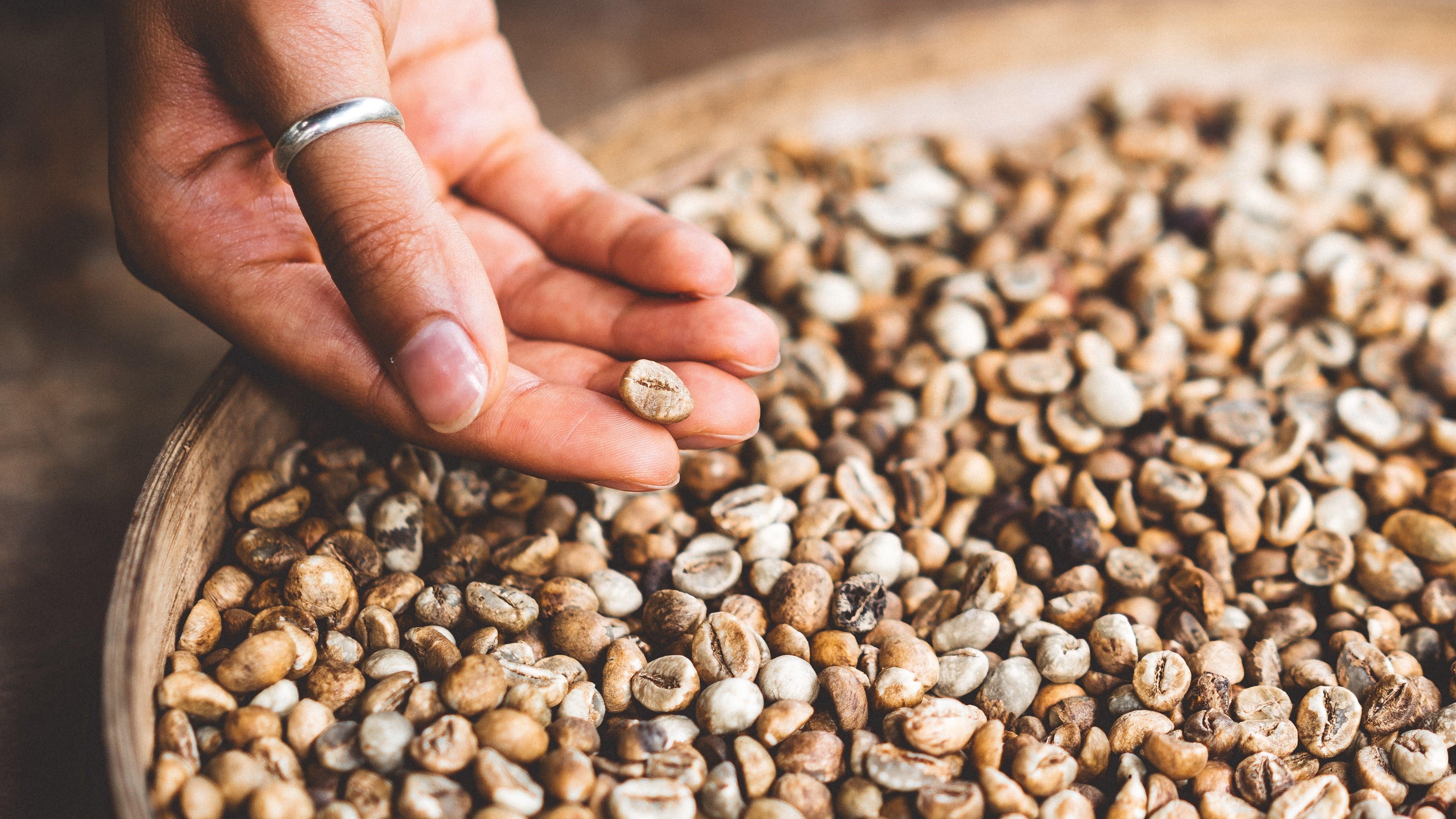
Processing and Drying
From Seed to Bean #2: Processing and Drying
Essential Methods to Know & How They Affect Your Coffee
In our Get To Know Your Beans article, we learned about different profiles and aromas of coffee beans grown from all around the world. Today, let’s take a look at how different processing methods can affect the taste of your cup.
Let’s begin with the first method:
3. PROCESSING
The Dry Method
Also known as “natural processing,” this age old natural method requires no water and is still used in many countries where water is limited.
In this method, coffee cherries are picked at peak ripeness and then spread on huge surfaces to dry in the sun. To prevent spoiling, these cherries are raked and turned throughout the day and covered at night or rain to protect from moisture.
Depending on the weather, this process can last several weeks for each batch, until the moisture content drops to somewhere around 11% - over drying will result in overly brittle coffee beans that produces a lackluster roast - while too high of water content will produce beans that cannot be easily stored, prone to bacteria and fungi.
In this method, natural sugars in and around the seed are infused to the body, giving it higher sugar content than washed or wet processed coffees. Generally, you can expect diverse, bold, fruity flavors and a heavier-bodied cup from coffee processed through this method. Some finer flavor notes you can find from this method are citrus, lime acidity, or a strong strawberry jam. Other strong notes include tropical fruit, bergamot, black tea, and dry chocolate.
Coffee processed through this method is generally recommended for entry coffee enthusiasts because it is easier to detect these strong and apparent flavors.
This method can be found in regions such as Ethiopia, or Brazil.
The Wet Method
The goal of the wet method is to remove pulp from the cherry after harvesting so that the bean is dried with only its parchment skin left on.
This method, widely used in Latin America and Africa, begins by passing freshly harvested cherries through a pulping machine to separate skin and pulp from bean.

Once skin and pulp is removed, beans are further separated by weight as they pass through water channels. Lighter beans float on top while heavier, ripe beans sink to the bottom. They are passed through layers of rotating drums to further separate them by size. Then these beans are transported to fermentation tanks.
Depending on the condition of the beans, the climate, and the altitude, the beans will remain in these tanks for 12 to 48 hours in order to remove the layer of mucialte (called parenchyma). This is done by naturally occurring enzymes and bacteria inside the tank.
This can be done dry or wet - if it is done dry, it is called “dry fermentation,” and if done wet with water, it is called “wet fermentation.” This fermentation step is one way which coffee mills around the world nuance the taste of the coffee they produce.
Generally, you can expect more complexity and sweetness from dry-fermented coffee, and brighter and drier taste from wet-fermented coffee.
Once fermentation is complete, the finished beans will feel rough to the touch. They are then rinsed by passing through more water channels, and are now ready for drying.
Coffee processed through the wet method are known for their subtle and cleaner taste, with flavors intrinsic to the seed communicated more clearly. There is more flavor of the seed, and less of the fruit.
One can expect a more pronounced acidity, developed organically in coffee made from this method - as well as a balanced, and delicate-bodied complexity that can be floral or tea-like in nature.
Honey Processed / Pulped Natural
Found in regions such as Brazil and Central America, this method creates a fine balance of flavors between the two previous methods mentioned. In this process, a producer de-pulps the coffee cherry immediately after harvest, similar to the washed process. But unlike the washed or wet process, this method skips fermentation, similar to the dry method, leaving any clinging mucilate to dry with seed.
In Costa Rica, honey processed coffee is classified by color - from black to yellow - with lighter hues meaning less pulp clinging to the seed.
Through this method, one can expect coffee that is sweet, similar to coffee produced by the natural dry process, yet without the distinct fruit flavors you would typically expect due to the lack of skin present on the seed. Typically, one can expect a creamier body, muted acidity, and as the name goes, a taste quite similar to honey.
So, whether you prefer the syrupy sweetness of a pulped natural, the crisp tartness of a delicate washed process coffee, or the powerful, distinct flavors of a natural dried bean, it is important to remember the importance of trying, tasting, and experimenting with different beans and brews to reach your full flavor potential.
4. DRYING
Once processed by the wet method, pulped and fermented beans are then dried to approximately 11% moisture for proper storage.
They can be dried regularly just like the dry method previously discussed: on large beds turned regularly, or machine dried in large tumblers.
These dried beans are known as parchment coffee and are stored in warehouses in jute or sisal bags until they are ready for transport.
We hope that you learn a few important details concerning your beans, and that you may use this knowledge to further enrich your experience and journey with coffee.
Until next time,
Ovalware
References:
https://www.eater.com/coffee-tea/2016/4/8/11392668/coffee-beans-roasting-processing-natural-washed-honey
https://www.coffeereview.com/coffee-reference/from-crop-to-cup/processing/fruit-removal-and-drying/
https://counterculturecoffee.com/blog/coffee-basics-natural-sundried-vs-washed-processes
https://live.staticflickr.com/7612/16978293245_993c391cdd_b.jpg
https://media-openideo-rwd.oiengine.com/media/618/d35dbad9-3fa4-48b7-9c90-115978553ee8.jpg
https://robbreportedit.files.wordpress.com/2016/10/el_salvador_coffee_141.jpg
https://robbreportedit.files.wordpress.com/2016/10/el_salvador_coffee_141.jpg




Leave a comment
This site is protected by hCaptcha and the hCaptcha Privacy Policy and Terms of Service apply.